
Vol. 69, No. 2
Spring/Summer 2016
Spring/Summer 2016

Vol. 69, No. 1
Fall/Winter 2015
Fall/Winter 2015

Vol. 68, No. 2
Spring/Summer 2015
Spring/Summer 2015

Vol. 68, No. 1
Fall/Winter 2014
Fall/Winter 2014
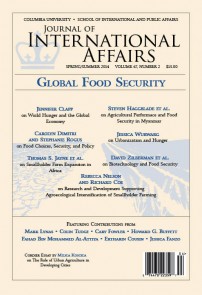
Vol. 67, No. 2
Spring/Summer 2014
Spring/Summer 2014

Vol. 67, No. 1
Fall/Winter 2013
Fall/Winter 2013
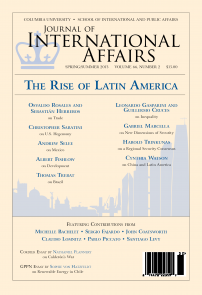
Vol. 66, No. 2
Spring/Summer 2013
Spring/Summer 2013

Vol. 66, No. 1
Fall/Winter 2012
Fall/Winter 2012

Vol. 65, No. 2
Spring/Summer 2012
Spring/Summer 2012

Vol. 65, No. 1
Spring/Summer 2011
Spring/Summer 2011

Vol. 64, No. 2
Spring/Summer 2011
Spring/Summer 2011
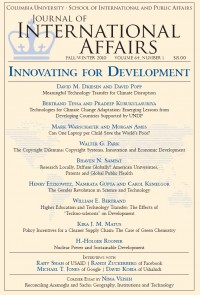
Vol. 64, No. 1
Fall/Winter 2010
Fall/Winter 2010

Vol. 63, No. 2
Spring/Summer 2010
Spring/Summer 2010
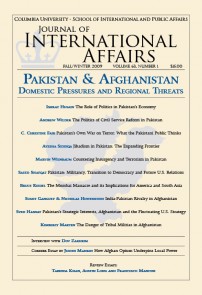
Vol. 63, No. 1
Fall/Winter 2009
Fall/Winter 2009
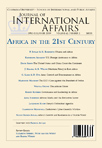
Vol. 62, No. 2
Spring/Summer 2009
Spring/Summer 2009
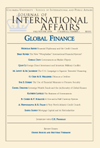
Vol. 62, No. 1
Fall/Winter 2008
Fall/Winter 2008

Vol. 61, No. 2
Spring/Summer 2008
Spring/Summer 2008

Vol. 61, No. 1
Fall/Winter 2007
Fall/Winter 2007

Vol. 60, No. 2
Spring/Summer 2007
Spring/Summer 2007
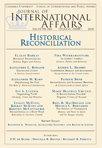
Vol. 60, No. 1
Fall/Winter 2006
Fall/Winter 2006

Vol. 59, No. 2
Spring/Summer 2006
Spring/Summer 2006

Vol. 59, No. 1
Fall/Winter 2005
Fall/Winter 2005

Vol. 58, No. 2
Spring/Summer 2005
Spring/Summer 2005

Vol. 58, No. 1
Fall/Winter 2004
Fall/Winter 2004

Vol. 57, No. 2
Spring/Summer 2004
Spring/Summer 2004

Vol. 57, No. 1
Fall/Winter 2003
Fall/Winter 2003

Vol. 56, No. 2
Spring/Summer 2003
Spring/Summer 2003

Vol. 56, No. 1
Fall/Winter 2002
Fall/Winter 2002
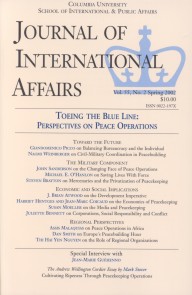
Vol. 55, No. 2
Spring/Summer 2002
Spring/Summer 2002

Vol. 55, No. 1
Fall/Winter 2001
Fall/Winter 2001

Vol. 54, No. 2
Spring/Summer 2001
Spring/Summer 2001

Vol. 54, No. 1
Fall/Winter 2000
Fall/Winter 2000

Vol. 53, No. 2
Spring/Summer 2000
Spring/Summer 2000

Vol. 53, No. 1
Fall/Winter 1999
Fall/Winter 1999
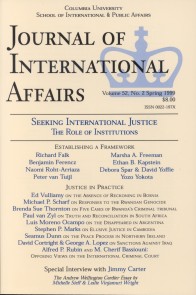
Vol. 52, No. 2
Spring/Summer 1999
Spring/Summer 1999

Vol. 52, No. 1
Fall/Winter 1998
Fall/Winter 1998

Vol. 51, No. 2
Spring/Summer 1998
Spring/Summer 1998

Vol. 51, No. 1
Fall/Winter 1997
Fall/Winter 1997

Vol. 50, No. 2
Winter 1997
Winter 1997

Vol. 50, No. 1
Summer 1996
Summer 1996
Migration
Vol. 68, No. 2, Spring/Summer 2015Andrew Wellington Cordier Essay
The Role of Diasporas in Conflict
By Amanda Roth
Regions Global Commons
Keywords: Conflict, cordier essay, diaspora
Regions Global Commons
Keywords: Conflict, cordier essay, diaspora
More on this article
This paper seeks to examine the role of diaspora populations in the perpetuation or resolution
of violent conflict in their homelands. The goal is to demonstrate the increasingly
significant role diasporas play in international affairs and the importance of viewing diaspora
groups as separate actors in a conflict, often with differing motivations. Diaspora
groups are capable of exerting disproportionate influence over events in their countries
of origin, due to disparities in economic wealth, freedom of expression, and influence on
governments in their adopted homelands. Concurrently, the conflict-related priorities of
such groups may differ from actors on the ground, with diaspora groups often attaching
significant weight to symbolic issues of identity and principle. Therefore, diaspora groups exert significant outside influence and, in some cases, may worsen or prolong conflicts in which they become involved. However, this paper argues that shifting trends in international conflict and advances in technology have made diaspora groups a permanent and growing facet of conflict, therefore necessitating specific strategies to engage their potential for peace-building. Drawing on a range of literature and historical examples, the author examines the reasons for the growing role of diaspora groups, the factors that make their engagement in homeland conflicts unique, and their ability to improve or worsen conflict. Ultimately, it argues, the international community must acknowledge the importance of diaspora groups and actively engage them in order to maximize their capacity for creating peace.
Article
Reversing the Elite Brain Drain: A First Step to Address Europe’s Skills Shortage
By Edoardo Campanella
Regions Europe
Keywords: brain drain, EU, Eurozone, immigration, remigration, skilled labor
Regions Europe
Keywords: brain drain, EU, Eurozone, immigration, remigration, skilled labor
More on this article
Since the end of the World War II, Europe has been repeatedly afflicted by waves of brain drain, with varying degrees of intensity across time and countries. But these outflows of human capital have rarely turned into some form of brain circulation, nor have they been compensated by adequate inflows of foreign talents. Now, the Digital Revolution and the economic restructuring imposed by a never-ending Eurozone crisis are amplifying the costs of these human capital losses, creating skills shortages that are undermining Europe’s ability to compete globally. So far, the European Commission (EC) has taken steps to loosen immigration policies to attract skilled foreigners from across the world. A thorough historical analysis, however, will show that it is high time for European governments to reattract their runaways. Policies aiming at remigration, rather than immigration, will generate greater political and economic efficiency.
Unaccompanied Children and the U.S. Immigration System: Challenges and Reforms
By Annie Chen
, Jennifer Gill
Regions Northern America
Keywords: child migration, immigration reform, migration
Regions Northern America
Keywords: child migration, immigration reform, migration
More on this article
In fiscal year (FY) 2014, approximately 60,000 children with no lawful immigration status and no parent or legal guardian present or available to provide care were apprehended at or near the U.S. border and turned over to the custody of the federal Office of Refugee Resettlement (ORR). These unaccompanied children (UAC) were charged with violating U.S. immigration laws and were placed in deportation proceedings. They enter a system that involves numerous government agencies which they must navigate. Most are released by ORR if they have family or another sponsor in the United States able to care for them, though they must continue to fight their deportation in immigration court, often without an attorney. Many UAC have legitimate claims that would lead to legal status if they could navigate the country’s complex web of immigration laws—approximately 40 percent of UAC are potentially eligible for some kind of relief from deportation. This article discusses the immigration system that UAC encounter, challenges they face within this system and proposals for reform. First, it provides a general overview of the U.S. immigration legal and detention system that UAC come into contact with when they arrive at the border. Then it discusses legal remedies available to this population and explains the difficulties of obtaining legal status as well as other challenges children face after release from ORR custody. The article then surveys the growing consensus about and efforts for reform—such as appointing government-funded counsel for children, broader proposals to create a more “child-friendly” immigration system, and the need for more comprehensive immigration reform. The article also explores threats to the current system that extends due process protections to these vulnerable immigrants.
Exploitation in Migration: Unacceptable but Inevitable
By Anne T. Gallagher
Regions Global Commons
Keywords: exploitation, Human Trafficking, immigration, migration
Regions Global Commons
Keywords: exploitation, Human Trafficking, immigration, migration
More on this article
For the millions of people who want or need to move, migration has become progressively more expensive and perilous. Legal access to preferred destinations is now an option only for the privileged few. The rest are forced into the arms of those able to help them circumvent ever-increasing controls and deterrents. Migrant smuggling, the business of moving people across borders for profit, is a sordid and dangerous enterprise, often placing lives and well-being at serious risk. And the dangers do not end there. Many of the world’s migrants find themselves deeply in debt to recruitment agencies, brokers, and sometimes their own employers before they even start work. In too many cases, these asymmetrical arrangements reach the level of human trafficking: Victims are tricked or coerced into situations of exploitation from which they cannot escape. This article argues that such practices, while unacceptable, are also inevitable. Without profound reforms to global migration regimes—and indeed to the organization of the global economy—there is likely no effective solution to migration-related exploitation. But important steps can be taken, even within the limits of current political constraints, to minimize vulnerability and harm. These include promoting political and legal acceptance of basic rights for all migrants, developing quality control systems for international labor recruitment, eliminating recruitment fees and sponsorship schemes, and co-opting civil society in an effort to increase transparency and accountability of governments and business activities.
Preventing Mass Atrocities Against the Stateless Rohingya in Myanmar: A Call for Solutions
By Katherine Southwick
Regions South-Eastern Asia , Southern Asia
Keywords: Genocide, migration, Myanmar, refugees, rohingya, statelessness
Regions South-Eastern Asia , Southern Asia
Keywords: Genocide, migration, Myanmar, refugees, rohingya, statelessness
More on this article
This article constitutes a call for solutions to the prolonged and worsening plight of the Rohingya, a largely stateless, Muslim minority based in western Myanmar. Over the past year, a number of experts have invoked the possibility of genocide against this group, citing a dangerous combination of ethnic and religious tensions, discriminatory deprivation of basic rights, restricted access to food and medicine, hate speech, and large numbers fleeing the country. Yet up to now, domestic and international responses to the Rohingya crisis have been weak, with serious consequences for this community, the prospects of democratic transition and rule of law in Myanmar, and the integrity of international law. This article highlights the basis for why the possibility of genocide has been raised and argues that the international community has legal obligations to act. These considerations could contribute to sharpening focus on the urgent need for regionally coordinated solutions, based on enforceable principles of nondiscrimination and inclusion, specifically guarantees of citizenship rights and protection. These are critical elements of democratic development in divided societies like Myanmar.
Are Syria’s Do-it-Yourself Refugees Outliers or Examples of a New Norm?
By Lionel Beehner
Regions Middle East
Keywords: refugee camp, refugees, Syria, za'atari
Regions Middle East
Keywords: refugee camp, refugees, Syria, za'atari
More on this article
Refugee camps are often treated as incubators of social unrest, violence, terrorism, and illicit trade. This provokes their overseers in the United Nations (UN) and other relief agencies to conduct frequent social engineering to enhance the camps’ legibility. Hence, we see orderly, perpendicular rows, standardized units from redistricting to the allocation of diapers, and so forth—all of the follies of high modernism that James Scott predicted in "Seeing Like a State," but writ small. Indeed, my qualitative research from the Za’atari refugee camp, located in Jordan along the Syrian border, indicates that refugees, especially middle-class ones like Syria’s, rebel against uniformity—or what Scott describes as “metis”—and seek to recreate their domiciles as best they can from the meager canvas tents and campers allotted to them. Put simply, they see their surroundings more as the disorderly “sidewalk ballet” of Jane Jacobs’ Greenwich Village than the high modernist yet sterile functionalism of Robert Moses. This holds important policy implications for the future of how we devise refugee camps, which increasingly resemble small cities; how we settle internally displaced persons (IDPs); and how we deal with the aftermath of mass population displacements. From direct cash transfers to the districting of refugees, some bureaucratic flexibility is required but so is an acknowledgement and embrace of refugees’ do-it-yourself ethos that is rooted in their resistance to authority and trauma from violence. Drawing from the literature in social anthropology and political science, this article presents new evidence from Za’atari that disputes the utility of a high modernist approach to the social engineering of large displaced populations.
Global Competition for Brains and Talent
By Manolo Abella
Regions Global Commons
Keywords: brain drain, higher education, student migration
Regions Global Commons
Keywords: brain drain, higher education, student migration
More on this article
Recent years have seen the emergence of an international market for higher education. It is likely that the number of international students worldwide may have reached 5.2 million in 2014, with these students responsible for expenditures for tuition, accommodation, and other living expenses of no less than $50 billion. Since 1970, the number of international students is estimated to have doubled every fifteen years, on average, and the pace may be accelerating because of the expanding pool of tertiary education graduates in emerging economies where more education suppliers are entering the market. Experts predict that there will be at least 8 million international students by market. 2025, a larger group than the total population of Switzerland, Norway, or Ireland. This article traces the growth of student migration to the Cold War period when it was driven largely by the competition between the Soviet bloc and the West for influence in the developing world, how it has since been transformed (and now is being driven mainly by competition for dominance in technological innovation and trade), and concludes with questions on what it means for the less-developed countries of origin.
A Manifesto for the Fragile City
By Robert Muggah
Regions Global Commons
Keywords: cities, technology, urban, urbanization, youth
Regions Global Commons
Keywords: cities, technology, urban, urbanization, youth
More on this article
After more than a century of steady city expansion in northern countries, the direction of twenty-first century population growth is shifting southwards. Over the next five decades, Africans, Arabs, and Asians will migrate in unprecedented numbers to cities, especially to their slums. Many of these urban settlements are insecure, disorganized, and violent. These are fragile cities and such migrations can threaten their inhabitants, countries, and the wider neighborhood. The analytical focus on fragile cities offers a novel scale when compared to fragile and failing states. It is also one that is preoccupying national policymakers, military strategists, and development experts. Drawing on theoretical and empirical contributions from geography, criminology, and sociology, this article identifies four mega-risks shaping urban fragility—the transformation and concentration of violence, turbo-urbanization, youth bulges, and the relentless penetration of new technologies. It also considers successful approaches to reversing city fragility, including twinning fragile cities with healthier and wealthier ones, investing in hotspot policing, interventions addressing at-risk youth, support for inclusive and cohesive urban growth, and the targeted application of new technologies.
Toward a South American Citizenship? The Development of a New Post-National Form of Membership in the Region
By Diego Acosta Arcarazo
Regions South America
Keywords: citizenship, freedom of movement, Globalization, Mercosur Agreement, migration
Regions South America
Keywords: citizenship, freedom of movement, Globalization, Mercosur Agreement, migration
More on this article
Migration law may be discussed as an example of a clash between two central contradictory globalization processes: first, the transformation of political membership through new forms of quasi-citizenship and their impact for traditional understandings of identity and belonging in the national polity, and second, the securitization of migration and the attempt by the state to control its borders, considered as its “last bastion of sovereignty.” The outcome of this dispute results in conflicting mechanisms of inclusion and exclusion and in illiberal state practices, contrary to fundamental rights, with profound implications for the rule of law in Europe and elsewhere. South America has usually been neglected in academic debates on migration law. This is regretful for two main reasons: first, the development of new liberal ideas on migration in the region which challenge established assumptions on the regulation of migration in Europe, the United States, and elsewhere, and second, the parallel establishment of a South American citizenship. This article will look at this aspect, in particular the Mercosur Residence Agreement, which establishes a free movement of people regime in South America. Its drawbacks and potential will be outlined before exploring possible future scenarios and their importance for other regions, including the European Union (EU).
Global ‘Undocumentedness’
By Kavitha Rajagopalan
Regions Global Commons
Keywords: Globalization, migration, undocumentedness
Regions Global Commons
Keywords: Globalization, migration, undocumentedness
More on this article
There are more international migrants today than at any other time in history, and at the same time, the globalization of supply chains and financial systems has spawned vast and once-unimagined networks of transit, communication, and distribution. This means people are moving in ways that are not always captured in accepted international migration statistics and to countries that are ill-equipped to develop or implement a national immigration policy. The confluence of these factors has contributed to a globalization of ‘undocumentedness,’ and yet, the global conversation about undocumentedness still orients itself to the United States and Europe. A quick survey of extant literature on undocumentedness, international migration, and informal labor points to a significant gap in scholarship on the causes and consequences of permanent and growing cross-border undocumented migration between developing countries, and as a global phenomenon. Research on undocumented immigrant communities in the West frequently focuses on social justice or national security concerns in a single place with a large undocumented population, rather than placing the emergence of those communities within the broader context of how international migration has changed. For example, undocumented migrants in the West are likely to have been undocumented migrants in developing or middle-income countries as well. Migrant networks often span many countries at once. This article will position undocumentedness as a global phenomenon, examining how economic globalization has contributed to a globalization of low- to middle-income migration to regional powers with limited-to-no migration management strategy or infrastructure. It will also consider some of the challenges undocumented migration poses in countries dealing with endemic poverty, massive internal migration, and structural race/caste/tribal fissures. Finally, it will consider what citizenship and belonging mean in this new global era.
Lessons from Contemporary Resettlement in the South Pacific
By Maxine Burkett
Regions Oceania
Keywords: Climate Change, climate migrants, relocation, resettlement
Regions Oceania
Keywords: Climate Change, climate migrants, relocation, resettlement
More on this article
Depending on the scale and distance of migration, a variety of challenges face both those moving because of climate impacts and the communities receiving these migrants. The lessons drawn from resettlements and planned relocations thus far—most notably in the Carteret Islands of Papua New Guinea—underscore the importance of adequate funding, careful planning, restoring traditional livelihoods, and ensuring voluntary community participation throughout the entire process. Critical hurdles persist, however, particularly for the most vulnerable communities within nation-states. This article explores the importance of adequate funding and identifies the dangerous and nagging impediments present, even as climate-induced migration advances in the adaptation discourse. With a focus on the Carteret Islanders’ ongoing relocation and resettlement to the island of Bougainville, this article argues that communities may face economic development and political gaps. Economic development gaps inhibit communities’ abilities to address redevelopment needs that elude appropriate classification for funding because they are neither strictly “climate” nor “development” categories. Additionally, political gaps exacerbate the challenges of accessing existing funding for local communities that are at odds with the national governments that purportedly represent their interests. These gaps compound the general lack of adequate funding for climate change mitigation and adaptation. Considering models for a new framework, this article explores the applicability of existing community-oriented funding regimes to address the political and economic development challenges that climate migrants face.
Factoring Migration into the ‘Development Data Revolution’
By Frank Laczko
Regions Global Commons
Regions Global Commons
More on this article
Migration stories appear in the news around the world nearly every day. Migration is one of the most hotly debated policy issues and has grown in importance on the global agenda of the United Nations (UN). But how much do we really know about migration and the impact of migration policies and programs? Do we have the data to make a strong case for the inclusion of migration in the post-2015 development agenda? This article takes a hard look at the migration evidence base and outlines a set of recommendations to achieve a “migration data revolution” over the next decade. The article is written from a global perspective, and discusses data on both regular and irregular migration. It also considers how data are shared and used by policymakers, and why there is so little data on the impact of migration programs.
Never Mind the Metrics: Disrupting Human Trafficking by Other Means
By Vanessa Neumann
Regions Global Commons
Keywords: Human Trafficking
Regions Global Commons
Keywords: Human Trafficking
More on this article
Measuring and mapping human trafficking are challenging for several reasons and therefore do not lead to effective counter-trafficking strategies. Understanding the drivers of human migration, however, is a much more promising approach for developing policies with risk-mitigating strategies. Insofar as the patterns of human migration are intertwined with other aspects of illicit trade, they can serve as an early warning signal of vulnerabilities in the global trade system for criminal activity. Tracking the financial links between human trafficking and other crimes provides various options for effective degradation and disruption of illicit trafficking networks.
The Child and Family Migration Surge of Summer 2014: A Short-Lived Crisis with a Lasting Impact
By Faye Hipsman
, Muzaffar Chishti
Regions Central America , Northern America
Keywords: immigration policy, regional migration, unaccompanied children
Regions Central America , Northern America
Keywords: immigration policy, regional migration, unaccompanied children
More on this article
In the summer months of 2014, a surge in the number of unaccompanied alien children (UAC) and family units from Central America arriving at the U.S.-Mexico border precipitated a crisis for the U.S. government and a firestorm in political and media circles. In recent years, no issue in regional migration (involving the United States, Mexico, and Central America) has attracted this level of red-hot attention and controversy. This article will first examine the numbers—and the trends—of the migration of unaccompanied children prior to and in the wake of this summer’s crisis. It will explore the complex set of push and pull factors responsible for the surge, including security concerns in Central America, structural economic dynamics in the region, the desire for family reunification, U.S. immigration policies that mandate special treatment of child migrants, and the role of smuggling networks. It will survey the policy responses of the governments of the United States, Mexico, El Salvador, Guatemala, and Honduras to the surge—and their impacts. Further, it will examine the ramifications of the child migration influx at the federal, state, and local levels in the United States, as well as the effects of the crisis on the broader political immigration debate in the United States. Lastly, the article will offer recommendations on how to better respond to child migration—both in the short term and on an ongoing, long-term basis.
Feature
Images of Statelessness: A Photo Essay of Myanmar’s Rohingya
By Saiful Huq
Regions South-Eastern Asia , Southern Asia
Keywords: bangladesh, Burma, refugee camps, refugees, rohingya, statelessness
Regions South-Eastern Asia , Southern Asia
Keywords: bangladesh, Burma, refugee camps, refugees, rohingya, statelessness
More on this article
Saiful Huq is a photographer from Bangladesh and a member of Polaris Images. He began photographing the Rohingya—a Muslim population who live in Myanmar’s Rakhine state—in his home country several years ago. Under a 1982 citizenship law, the citizen rights of the Rohingya were stripped away, and today, they are considered a stateless population. Many were internally displaced in Myanmar as a result of conflict in 2012, while other Rohingya have migrated to new countries. About 30,000 still live in refugee camps in Bangladesh. Since Huq started his project, he has expanded the scope, traveling around the world to photograph the Rohingya people.
Eighty Thousand Entry Points: An Interview with Antje Missbach
By The Journal of International Affairs
Regions Oceania , South-Eastern Asia
Keywords: Australian immigration, border protection, border security, immigration, Indonesia
Regions Oceania , South-Eastern Asia
Keywords: Australian immigration, border protection, border security, immigration, Indonesia
More on this article
With over 80,000 kilometers of borders, Indonesia has become a transit hub for migrants hoping to reach Australia. However, as Australia tightens its entry and immigration policies under Prime Minister Tony Abott, many migrants have found themselves stuck in this archipelagic country. Some surrender to authorities immediately and end up in detention centers, while others live in secrecy. Dr. Antje Missbach is a research fellow at Monash University in Melbourne, Australia, who has been studying these migration flows since 2010. She spoke with the Journal about trends that she has seen from her fieldwork over the last few years.
Rising Tides: An Interview with Aunese and Sunema Simati
By The Journal of International Affairs
Regions Oceania
Keywords: Climate Change, natural disasters, Oceania, Pacific Island, sea-level rise, Tuvalu
Regions Oceania
Keywords: Climate Change, natural disasters, Oceania, Pacific Island, sea-level rise, Tuvalu
More on this article
Tuvalu is a small nation of islands near Fiji with a combined population of about 10,000 people. Internal flooding, loss of vegetation, and the threat of devastating tropical storms are just some of the issues that its people face today. The Pacific nation is one of the first countries in the world to see its livelihood threatened due to these problems. Tuvalu’s Permanent Representative to the United Nations (UN), Aunese Makoi Simati, and his wife, Sunema Pie Simati, sat down with the Journal to discuss some of the challenges their nation faces and their hopes for the future.
Define American: An Interview with Jose Antonio Vargas
By The Journal of International Affairs
Regions Northern America
Keywords: immigration, immigration reform, undocumented, United States immigration
Regions Northern America
Keywords: immigration, immigration reform, undocumented, United States immigration
More on this article
Jose Antonio Vargas is a Pulitzer Prize-winning journalist who was formerly a staff writer for The Washington Post, among other prominent publications. In a 2011 New York Times Magazine essay, he revealed himself to be an undocumented immigrant to promote public dialogue about immigration issues in the United States. He went on to produce a documentary, Documented, about his family history and launched the organization Define American with the goal of changing the conversation about immigration reform in the United States. Vargas spoke with the Journal from Los Angeles, California about his immigration story and some of the priorities he sees for his advocacy work today.
Actors in Forced Migration: An Interview with Kelly Greenhill
By The Journal of International Affairs
Keywords: forced migration
Keywords: forced migration
More on this article
Dr. Kelly Greenhill is an associate professor at Tufts University and a research fellow in the Belfer Center’s International Security Program at Harvard University. She studies the security of migration change. Her work focuses on new security challenges, including forced migrations, and how these may be used as a political weapon or a tool for diplomacy. Her recent book, "Weapons of Mass Migration: Forced Displacement, Coercion, and Foreign Policy," won the 2011 International Studies Association’s Best Book of the Year award. Greenhill also was a co-author and co-editor with Peter Andreas of "Sex, Drugs, and Body Counts: The Politics of Numbers in Global Crime and Conflict." She spoke with the Journal about her work and how she sees forced migrations playing out on today’s world stage.
Visualizing Global Migration
By Guy Abel
, Nikola Sander
, Ramon Bauer
, Wittgenstein Centre for Demography and Global Human Capital
Regions Global Commons
Keywords: data visualization, global migration, migratory flows
Regions Global Commons
Keywords: data visualization, global migration, migratory flows
More on this article
Created by a team of researchers at the Wittgenstein Center for Demography and Global Human Capital in Vienna, this visualization explores bilateral migration flows between 196 countries.1 The project used stock data from the United Nations (the number of people living in a country other than where they were born) to estimate these flows over five-year blocks of time. Rather than calculating the net flow, the color of the line represents the country that the migrants left, and it points to the new country where they settled. The thickness of the line represents how many people followed that path of migration. “Thinking beyond a simple geographic representation allowed the large data set that came out of this analysis to be more easily represented,” said Nikola Sander, a research scholar who worked on the project. “This approach to examining migration through flows also offers a more contemporary look at population changes,” she adds.
GPPN Essay
An Argument for Using Frozen Assets for Humanitarian Assistance in Refugee Situations
By Selim Can Sazak
Regions Middle East
Keywords: frozen assets, humanitarian assistance, humanitarian response, refugees, Syria, UNHCR
Regions Middle East
Keywords: frozen assets, humanitarian assistance, humanitarian response, refugees, Syria, UNHCR
More on this article
As demonstrated by the recent crisis in Syria, the international community is failing to respond effectively to refugee crises around the world. With the civil war in Syria and the massive influx of Syrian refugees into neighboring countries such as Lebanon, Jordan, Iraq, and Turkey, as well as many countries in Europe, the efficacy of the international human rights regime in responding to complex humanitarian emergencies has once again come under question. In January 2015, the Office of the United Nations High Commissioner for Refugees (UNHCR) declared that Syrians overtook Afghans as the largest refugee population aside from Palestinians.1 UNHCR estimates that more than 12 million Syrians have been internally displaced and close to 4 million Syrians were forced to leave their country since the outbreak of the civil war, fleeing mostly to Syria’s immediate neighbors.
Review
Rethinking Local Governance in Modern China in Light of Migratory Patterns
Children as Individuals: Assessing Their Rights in the Context of Global Migrations
Freedom of Migration: Oxymoron or Paradox?
A Narrative of Low-Wage Migrants in Singapore
Setting Up Shop: The Far Reaching Implications of China’s Burgeoning Presence in Africa
By Michael R. Corcoran
Regions Africa , Asia
Keywords: Africa, China, Development, imperialism, Labor Rights
Regions Africa , Asia
Keywords: Africa, China, Development, imperialism, Labor Rights
Unauthorized Immigrants as “Americans in Waiting:” A Call for Re-Articulating the Scope of Legality and Documentedness
By Andrew Gallo
Regions Global Commons
Keywords: immigration, immigration law, unauthorized immigrants
Regions Global Commons
Keywords: immigration, immigration law, unauthorized immigrants
Beyond Geographic Borders
A Quest of Self, Opportunities, and Belonging
By Sonia A. Syafitri
Regions Northern America , South-Eastern Asia
Keywords: Canada, Filipino Women, Identities, migration
Regions Northern America , South-Eastern Asia
Keywords: Canada, Filipino Women, Identities, migration
Remittances in a Continuum of Space and Place
News & Events
-
May
23
Call for Papers: Cyber
-
Apr
15
Announcing the 2016–2017 Editorial Board
-
Mar
23
Call for 2016-2017 Editorial Board Applications
-
Apr
21
Announcing the 2015-2016 JIA Editorial Board
-
Feb
19
Call for 2015-2016 Editorial Board Applications
-
Feb
17
Save the Date: Thought Leadership Forum, 28 April 2015
Connect
23 Call for Papers: Cyber
15 Announcing the 2016–2017 Editorial Board
23 Call for 2016-2017 Editorial Board Applications
21 Announcing the 2015-2016 JIA Editorial Board
19 Call for 2015-2016 Editorial Board Applications
17 Save the Date: Thought Leadership Forum, 28 April 2015
Loading Journal
One moment



